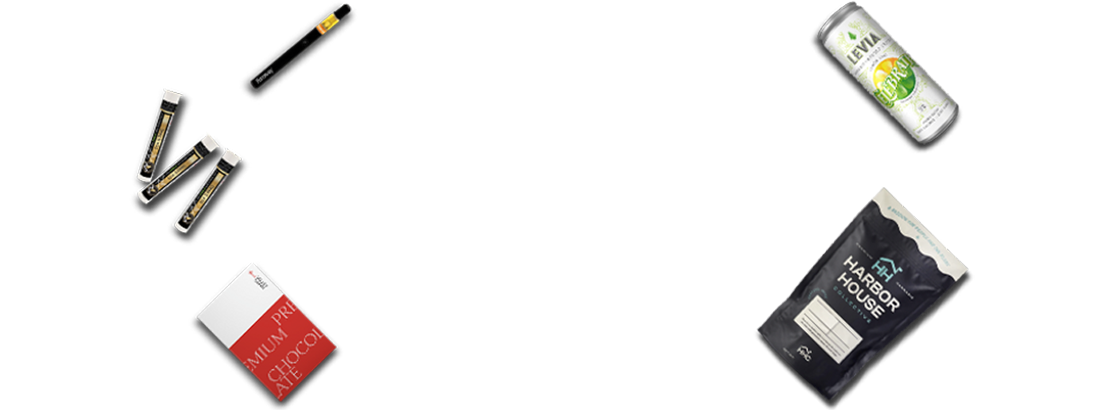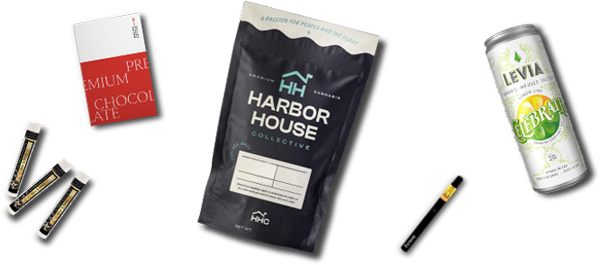

Education
Everything you need to know about Cannabis!
Welcome! If you’re trying cannabis for the first time or trying again after a long time, our goal is to make sure you have all the information you need to make a decision. We’ve curated some of the most commonly used words and phrases, tips for consumption, and we’re outlining the differences between Sativa, Indica, and Hybrids, and so much more. Plus, the Zyp Run team is always ready to help you out with any questions.
NOTE: Marijuana Vaporizer Devices have been tested for Vitamin E Acetate and other contaminants*, with no adverse findings.
WARNING: Vaporizer Devices may contain ingredients harmful to health when inhaled.
*Consumers shall have access to the test results of Marijuana Vaporizer Devices including copies of any Certificates of Analysis provided by the device’s manufacturer
This is all new to me; where do I start? No worries, fam. We’ve got you. Cannabis
There are many ways to enjoy the benefits of cannabis. While most people are familiar with smoking, there are many other avenues to explore. Delicious edibles that you eat, topicals that you place on your skin, vapes that allow you to smoke concentrated cannabis oil, sublinguals, which are cannabis oil suspensions, or dabs which are very heavily concentrated amounts of cannabis extract that are heated at a very high temperature and inhaled. No matter which of these methods you choose, make sure you start with a tiny dose and work your way up from there. Remember that cannabis affects each person differently, and some new users may not feel the full effect, or any at all, the first time they try it.
Um, it’s been a while since I rolled my own or hit a bong. What’s the latest and greatest?
Get excited — this is not the marijuana you grew up with or smoked at college! The legal market today is packed full of amazing new products and new ways to consume. But, heads up, it can be a lot more potent than you remember, so slow your roll and see how you feel before gobbling up a handful of gummies. Times have changed, and you’re probably going to need to learn a few new names and terms — check out the glossary below provided by Leafly for more detailed information.
What’s the deal with Sativa, Indica, and Hybrids?
Sativa is more likely to provide more uplifting and cerebral effects that pair well with creative, social, and physical activities. Indica has a calming and relaxing effect. More potent varieties numb your body and put you to sleep. It’s great for stress relief and perfect for a long Saturday afternoon when all you want is Netflix and your couch. Hybrid strains bring together the best of both worlds! A great Hybrid will be uplifting, mellow, creative, and calm. Ultimately, it boils down to personal preference. Hybrids can be Sativa or Indica dominant and have the effects to match.
Common Terms
- Adult Use
- “Adult-use” and “recreational” mean the same thing: Cannabis that can be bought by adults 21+ in a legal state. the only difference is that some state legislatures use one term over the other in their laws. There is no difference between cannabis products labeled with either of these terms.
- Budtender
- An employee at a cannabis store who is responsible for helping customers. Job duties include educating the public on cannabis products and helping customers navigate and purchase cannabis products. Budtenders use their expertise in cannabis to help guide people through the cannabis experience.
- Dispensary
- Dispensaries are licensees in the cannabis industry who dispense products to patients and customers. Some states permit dispensaries to deliver cannabis products directly to customers at their homes in addition to dispensing them at a store.
- Eighth
- An eighth (⅛) is a measurement of cannabis weight. It is the shorthand for “one-eighth of an ounce,” or 3.5 grams. Cannabis shops and dispensaries sell cannabis in a variety of different weights, the most common of which are grams, eighths, quarters, half-ounces, and ounces. Depending on how big the bowl is on your pipe or bong, an eighth of cannabis will typically provide you with seven to ten bowls.
- Endocannabinoid System
- The endocannabinoid system is a system of receptors throughout the brain and body that respond to compounds in cannabis like THC, resulting in a range of different subjective and therapeutic effects. Our bodies naturally produce molecules called endocannabinoids which bind to these receptors, though cannabis also interacts with them. Researchers believe the endocannabinoid system’s primary function is to maintain balanced functioning in our bodies and to regulate signaling in the brain.
- Entourage Effect
- The phenomenon that all compounds in the cannabis plant, including cannabinoids, terpenes, and more, work together synergistically to provide greater effects and health benefits than by themselves when consumed—the sum is greater than the whole of the parts. Because of this, many cannabis consumers subscribe to whole plant medicine, as opposed to consuming isolated cannabinoids or other compounds.
- Strain
- A strain refers to the named variations of cannabis that differ in appearance, aroma, and effect. Cannabis grows natively in different regions of the world and has been selectively bred for various characteristics. Terms like “sativa” and “indica” describe different structural differences in the plant: narrow vs. broad leaves, tall vs. short stature, etc. Cannabis strains that has been crossbred are called hybrids, which make up a vast majority of cannabis available today.
- Terpenes
- Terpenes are the aromatic compounds that give cannabis strains their unique scent. In other words, terpenes are the reason Tangie smells like sweet oranges, Permafrost like a pine forest, and Sour Diesel like a bucket of funky fuel. Research has yet to demonstrate just how these aromatic compounds contribute to the effects of cannabis, but theoretically, different terpenes may help shape the sensations imparted by different varieties of cannabis. Just as different essential oils have different uses, so might cannabis terpenes.
- Therapeutic Window
- When consuming cannabis, the therapeutic window is the range between the lowest effective dose and a dose that produces negative side effects for the consumer. Newer consumers usually have a narrow therapeutic window, while regular consumers have a wider one because they have a higher tolerance.
Plant Basics
- Backcross
- Backcross is a plant that has been bred with itself or one of its parents; inbreeding, essentially. Backcrossing is done to bring out or strengthen certain genetic traits of a cannabis strain, such as flavors, aromas, effects, high yields, or resistance to mold, and is common in commercial cannabis breeding.
- Breeding
- The practice of pollinating a male and female cannabis plant to produce a new hybrid strain, or to strengthen certain genetic traits of a strain. Male cannabis plants have pollen sacs that will release pollen in the air once mature and then pollinate a female. The female plant will then produce seeds, which will be a new strain that carries the genetics of both male and female parents.
- Bud
- A term used to refer to the petalless flowers of the cannabis plant. Buds, or “nugs”, contain trichomes which in turn have compounds such as cannabinoids and terpenes that can get you high or give medical benefits. Buds that grow closely together form colas, and buds must be dried and cured before they can be smoked or vaporized. Only female cannabis plants can produce buds.
- Cannabinoids
- Cannabinoids are a class of compounds produced in the resin glands of the cannabis plant. THC (tetrahydrocannabinol) and CBD (cannabidiol) are the two most well-known cannabinoids, but cannabis produces dozens of others such as THCV, CBN, and CBC. Cannabinoids aren’t only found in cannabis; they are also produced naturally in the body. However, the cannabinoids produced in our bodies — called “endocannabinoids” — behave differently than those found in cannabis, which is why we don’t feel high off of our own endocannabinoid supply.
- CBD
- CBD, short for cannabidiol, is a non-intoxicating compound produced by the cannabis plant that is popularly used for a variety of medical applications including pain, anxiety, and seizures. Although most cannabis varieties contain high levels of the euphoric compound THC, the plant can be bred to produce increased amounts of other compounds like CBD. Although CBD cannabis strains can be smoked in flower form, it is most commonly extracted from the plant and prepared into oils, edibles, and vape products.
- Clone
- A cutting taken off a marijuana plant, which will grow into another full plant. A clone is a genetic replica of the mother, the plant it was taken from.
- Cultivation
- The process of growing cannabis plants, including preparing soil, germinating seeds, cloning, planting, tending plants, harvesting, and more.
- Flower
- Flower, also known as “bud”, is the trichome-rich part of the female cannabis plant that clusters into colas. Flower contains cannabinoids and terpenes which can get you high or offer medical benefits. Cannabis flower is usually smoked in pipes, bongs, joints, blunts, etc., and can be used to make extracts.
- Full Spectrum
- Full-spectrum extracts are extracts of cannabis flower that include all compounds of the plant including cannabinoids, terpenes, flavonoids, alkaloids, and more, instead of an isolate of one of the compounds. Full-spectrum extracts take advantage of the entourage effect — the synergistic effects of the combined compounds are often stronger and have greater medical benefits than an isolated compound on its own.
- Hybrid
- A cannabis plant that is the result of crossbreeding two other plants. Cannabis breeders often create hybrids to combine characteristics of the parent plants into one strain.
- Indica
- Indicas are one of two types of cannabis plants, along with sativas. Indica plants originally grew in cold, northern climates, are short and dense, and have broad leaves. Indicas are also known to have a shorter growing time than sativas, and some turn purple in color.
- Kief
- Kief refers to the sticky crystal resin that coats cannabis buds. Once the cannabis plant is harvested and dried, kief turns into a darker — usually gold to brown — powder-like dusting that is popularly collected in grinders as it readily detaches from the buds when ground. Kief is formed by the cannabis flower’s trichomes, the glands that secrete oils rich in compounds like THC, CBD, terpenes, and more.
- Nug
- A nug is a smokable, self-contained piece of cannabis flower. Nugs can vary in size and color depending on their genetics and how they were cultivated and typically fit in the palm of one’s hand. “Nug” is an abbreviation of “nugget”, possibly in reference to the discovery of gold in California.
- Shatter
- Shatter is a cannabis extract that is solid and translucent in appearance, as if you could shatter it like glass. It achieves its glass-like appearance through specific processing techniques involving solvents like butane or other hydrocarbons. Concentrating essential compounds like THC and CBD, shatter offers the benefits of cannabis in a highly concentrated, compact form that is popularly dabbed or vaporized.
- Trichomes
- The resinous glands on cannabis buds that contain the plant’s cannabinoids, terpenes, and other compounds. Strains with a heavy coating of trichomes typically have more cannabinoids and terpenes.
Ways to Consume
- Alcohol Extraction
- One of many ways of making cannabis concentrate. This method requires soaking the flower in food-grade alcohol for a certain amount of time and then straining it, with the remaining liquid put over a low heat source to remove the alcohol while still preserving the cannabinoids.
- Badder/Batter
- Badder, also called batter, is a cannabis concentrate named for its malleable consistency that resembles frosting or a thick cake batter. High quality badder/batter is often golden or blond in color.
- Battery
- A device used to power a vaporizer or other cannabis consumption device. Batteries are most often used to power vape pens — they are usually rechargeable, lithium ion batteries with a 510 thread; a cartridge filled with cannabis oil is screwed onto the battery, for easy, discreet use.
- Butane Hash Oil
- Butane hash oil, or BHO for short, is a specific type of cannabis concentrate made using the chemical solvent butane. BHO extracts can be either hard and glass-like, soft and waxy, or a sticky, stretchy in-between. Because BHO can vary so widely in appearance and texture, they may go by other names such as “honeycomb,” “crumble,” “icing,” and other descriptive monikers. BHO is most commonly consumed via dabbing.
- Blunt
- Cannabis that is rolled, wrapped, or stuffed into a paper made of tobacco. Blunts can be rolled from cigars emptied of tobacco or from blunt wraps, which are large, thick rolling papers made of tobacco. Blunts are usually bigger than joints, and hold one to three grams of cannabis.
- Bong
- A bong is a water pipe that filters smoke from cannabis before you inhale it. It’s vertical, consisting of a base (where the water goes) and a chamber where you draw in smoke. Like a pipe, a bong has a bowl for cannabis; smoke then travels through the downstem and into water, and then into the main chamber to be inhaled. Bongs are typically less harsh than pipes because the smoke is filtered through water.
- Bowls
- Bowls are the part of a pipe or bong that holds cannabis flower. In bongs, they are typically removable and these are also called a “slide,” because they slide out in order to clear the chamber and inhale smoke. “Packing a bowl” refers to filling a bowl with flower in order to have a smoke session.
- Bubble Hash
- Bubble hash, named for the way it bubbles when smoked, refers to a specific type of hash made with ice water. To make bubble hash, cannabis flower is added to bags of ice water (called “bubble bags”) and agitated, which freezes and then breaks the resin glands from the flower. These broken resin glands, which contain essential compounds like THC and CBD, move through a series of screens while the plant material is left behind, forming bubble hash.
- Capsule
- An ingestible form of cannabis, usually an oil, that has been enclosed in a tablet to be taken orally. Capsules are digested and metabolized in the stomach and liver like edibles but do not contain food and allergen ingredients, making them ideal for patients who need consistent doses of cannabis medicine that won’t interfere with their body’s other systems.
- Cartridge
- A pre-filled tank of cannabis concentrate designed to work in a vape system. Cartridges, or “carts,” also incorporate a heating element, which vaporizes the oil. Most cartridges screw onto a battery with 510 thread but some have unique fittings. Cartridges usually come in a half-gram or full gram of cannabis oil.
- Concentrates
- Concentrates, also known as extracts, are produced from cannabis trichomes, which contain the cannabinoids, terpenes, and other compounds which give cannabis its recreational and medical effects. There are a variety of methods to create and process concentrates, and they can generally be lumped into two categories: full-spectrum concentrates and isolates.
- Dabbing
- Dabbing is a method of consuming cannabis that involves flash vaporizing an extract — called a “dab” — on a hot surface and inhaling the vapor through a pipe. Popular for its fast-acting and hard-hitting high, dabbing is often too intense for cannabis beginners (although it is possible to dab with non-intoxicating CBD extracts). In order to dab, you must have a dab rig, which is usually a glass pipe with specific attachments that allow you to apply extracts.
- Diffuser
- A device in a bong or dab rig that diffuses smoke when in water, creating a smoother, cooler hit. Usually attached to or replacing the downstem, diffusers create many smaller bubbles than a traditional downstem, increasing surface area and cooling the smoke. Diffusers can also quiet the sound of a bong or dab rig.
- Edibles
- “Edibles” refer to any food containing marijuana, typically with the cannabinoids THC or CBD. Cannabis is usually infused into a fat-soluble base, such as butter or oil, and the infusion is used to make baked goods, such as brownies, cakes, etc. Edibles are consumed orally and processed in the stomach and liver, making them more potent and longer-lasting than smoking cannabis, but with a longer time for the onset of effects. Edibles allow people to consume cannabis without inhaling smoke and typically don’t smell.
- Extract
- The resin of a cannabis plant, which contains cannabinoids, terpenes, and other active compounds, can be extracted into a concentrated form, called an “extract.” There are many different types of cannabis extracts, depending on the extraction method used and the texture, consistency, and appearance of the resulting extract. Broadly, extracts can fall into two categories: full-spectrum, which contain all compounds of the plant, and isolates, which are a concentrated form of one compound.
- Joint
- A joint is a rolled marijuana “cigarette,” or cannabis wrapped in a rolling paper. Rolling papers can be made from wood pulp, hemp, rice, and other materials. Joints are one of the most common methods of smoking cannabis.
- Pre-Roll
- A pre-roll is a ready-to-go joint filled with cannabis that you can buy from a store — it’s pre-rolled for you. Pre-roll has become the industry-preferred term, rather than “joint,” though many cannabis consumers still call them joints. Pre-rolls are among the most common methods of smoking cannabis and can likely be found at most dispensaries.
- Tincture
- A cannabis-infused liquid that is ingested or absorbed sublingually.
- Topical
- Topicals are cannabis products that are absorbed through the skin for therapeutic benefits. To make these products, cannabis is infused in an oil, balm, lotion or some other carrier designed to go directly on the skin. Cannabis topicals are often used to treat localized pain, soreness, and inflammation and don’t make you feel high.
- Vape Pen
- A common type of vaporizer, vape pens are handheld, discreet, and can fit in your pocket. They usually consist of a battery with a cartridge, or “cart,” that screws on top; the cart contains cannabis oil and a heating element.
- Wax
- Cannabis wax is an extract named for its soft, malleable texture that resembles wax. Because wax can take on so many nuanced forms, it may also be called “butter,” “badder,” “honeycomb,” or other descriptive names that speak to the extract’s texture and appearance. Wax can be made using a variety of different production techniques such as butane or hydrocarbon extraction. Wax is most popularly consumed via dabbing, but it can also be added to bowls, joints, or blunts for added potency.

